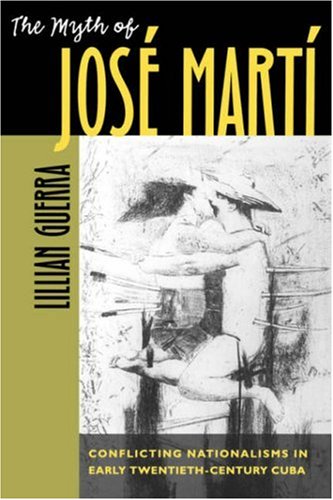José Martí is an icon in communist Cuba. Visitors disembark at José Martí International Airport in Havana, where the Plaza de la Revolución contains a prominent statue of Martí. In 2000, Fidel Castro had a José Martí Anti-Imperialist Tribunal built in front of the U.S. Interests Section. Not surprisingly, Castro and his functionaries assert harmony between their totalitarianism and Martí’s thought.
Born in 1853, Martí precociously opposed Spain’s occupation of Cuba. He founded an anti-imperialist newspaper, La Patria Libre, at 16 and was arrested for treason in 1869. After he was condemned to six years’ hard labor, Spain commuted his sentence and deported him in 1871. In his new residence (Spain), Martí wrote an account of his trauma and an indictment of the hegemon that inflicted it. The blend of reportage and rumination in Political Prison in Cuba became standard in Martí’s writings. At one point, he describes the sufferings of a 12-year old prisoner ravaged by smallpox and efforts to resuscitate cholera victims; later, he observes that “No idea can ever justify an orgy of blood.” (It is difficult to read Political Prison in Cuba without thinking of counterparts in modern Cuba: Ana Rodriguez’s Diary of a Survivor, Jorge Valls’ Twenty Years and Forty Days, and too many more.)
“Life wants permanent roots,” Martí wrote in 1880. Deracination was his reward for abhorring tyranny. Martí moved to Mexico in 1875 and fled after Porfirio Díaz’s ascendancy in 1876; taught in Guatemala and fled in 1878 after the repressive Justo Rufino Barrios dismissed a colleague; returned to Cuba and was deported in 1879 for anti-imperial activities; and spent less than a year in Venezuela owing to another caudillo, Antonio Guz-mán Blanco. In America, Martí found a place where “One can breathe freely” and “every one looks like his own master.” He settled in New York in 1881 and remained in America until 1895.
Martí immersed himself in America and wrote copiously about “this mighty republic.” He did not withhold praise from what struck him as beautiful, like Emerson’s “palace of truths” and Whitman’s “disjointed, lacerating, fragmented, drifting words.” Neither did Martí withhold denunciation when he saw vileness—for instance, in the lynching of 11 Italians by a New Orleans mob in March 1891. Here is how he described the murder of one of the victims:
They throw a noose of fresh rope around his cold, dead neck and leave him hanging from the branch of a tree. Then they saw off the other branches: the women wear the leaves in their hats as an emblem, the men in their buttonholes. One of them takes out his watch: “Forty-eight minutes: we worked fast.” From the rooftops and balconies people are watching through opera glasses.
Serene events also intrigued Martí. “Never has there been a more beautiful thing,” he wrote of a Confederate commemoration in 1886, noting how Jefferson Davis addressed the audience “with rage and occasional outbursts of savage beauty . . . and with sudden exclamations of invincible hatred, like a toothless and enfeebled mastiff who bares his gums at his enemy.” (As a senator, Davis advoca-ted the acquisition of Cuba and visited Havana before and after the War Between the States.)
Martí remained preoccupied with Cuba during his American years, serving as interim president of the New York-based Cuban Revolutionary Committee and cofounder of the Cuban Revolutionary Party in Key West in 1892. When Martí perceived ambitions of caudillismo in fellow revolutionary General Máximo Gó-mez, he broke with him in 1884. Martí made clear in a letter to Gómez his
determination not to contribute by one iota, out of blind love for the idea that is consuming my life, to bringing a regime of personal despotism to my land, a regime that would be even more shameful and calamitous than the political despotism it now endures, and more serious and difficult to eradicate, because it would be excused by certain virtues, and established upon an idea which it embodied, and legitimized by triumph.
And so Martí prefigures Cuba since 1959; Fidelismo has been the sanguinary fulfillment of his worst apprehensions. In duration and severity, Castro dwarfs the caudillos Martí fled. Castro, of course, claims to act in defense of national independence, the Sovietization he inflicted upon Cuba notwithstanding.
Martí was a crusader after perils. He wrote his mother at 16 that imprisonment “has given me plenty of lessons for my life, which I foresee will be very short”; in 1895, he wrote to her of “my growing and necessary agony” and “a life that loves sacrifice.” Martí returned to Cuba that year to participate in the war for independence he had organized. On May 19, in the eastern province of Oriente, he fatally rode into Spanish troops. Martí had been in Cuba a little over a month.
Frederick Douglass observed in 1862 that “Men have strange notions nowadays as to the manner of showing their respect for the heroes of the past.” Cuba’s present master class shares such strange notions. On one side, there is the man who advocated republicanism and the rights of man; on the other, an autocrat of 43 years who systematically violates those rights. Fidel Castro has said that José Martí is the “intellectual author” of his regime. No; but he will be the intellectual author of Cuba’s emancipation from Castro.
[José Martí: Selected Writings, edited by Esther Allen (New York: Penguin Classics) 462 pp., $15.00]

Leave a Reply